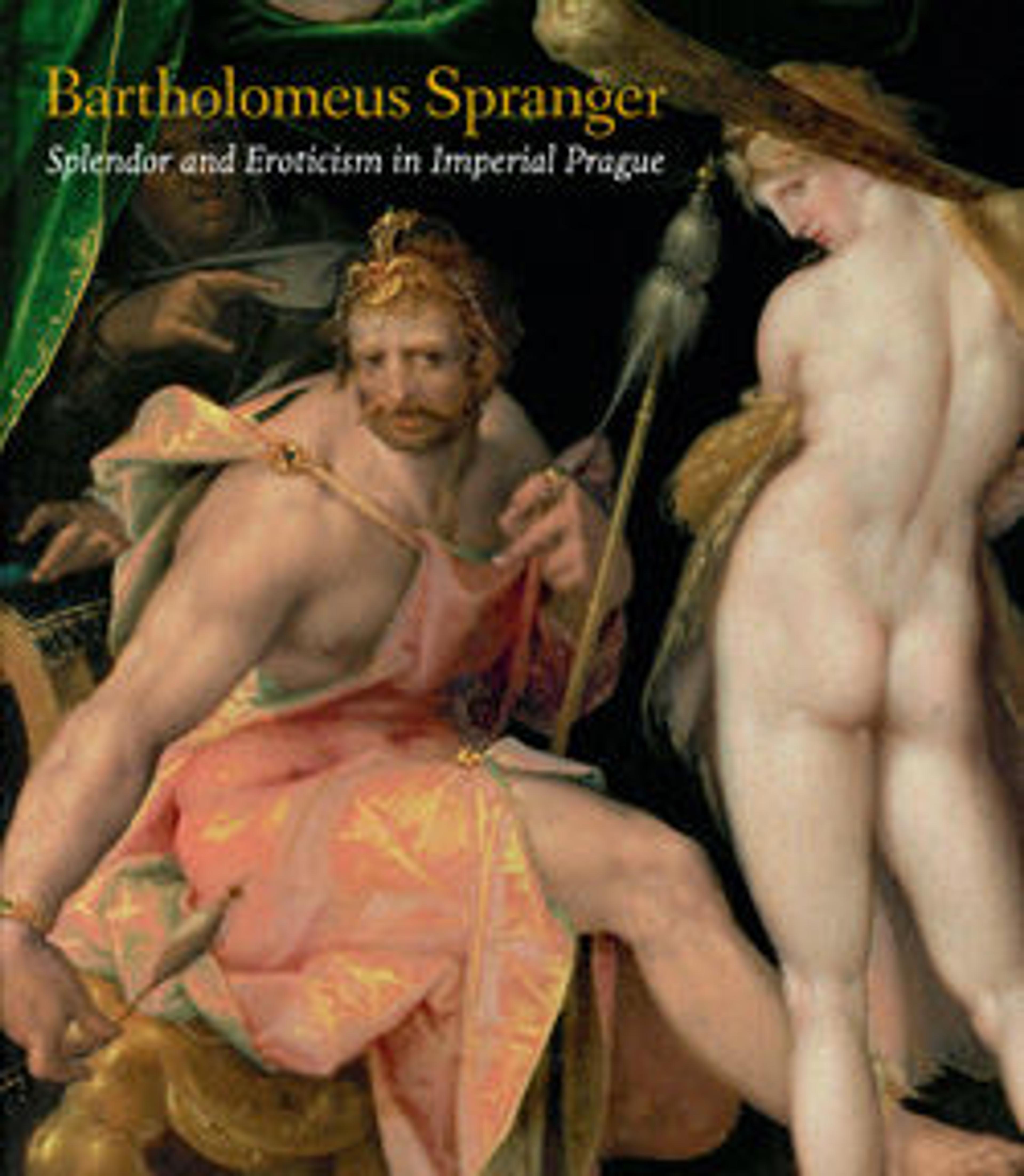Apotheosis of the Arts
In 1597, while the army of Rudolf II, the Holy Roman Emperor, was engaged in a drawn- out war with the Ottoman empire, Jan Muller engraved this astonishing, monumental allegory of Architecture, Painting and Sculpture. The three sister arts are shown as impossibly long-limbed, elegant female nudes, lifted up by the figure of Fame, and carried along a twisting ladder of clouds to reach the court of Zeus on Mount Olympus. In the lower, terrestrial portion of the composition is a troop of soldiers from the Rudolf’s imperial army, whose banners are visible above the billowing clouds. They are the defender of the Arts against the Ottoman troops, seen in the lower right corner. To further reinforce idea of a civilized and cultured European society, noble men and women and Christian church figures are pictured together at the lower left observing artists from the three fields at work.
The Apotheosis of the Arts is after a design by Bartholomeus Spranger, who was court artist to Rudolf II. It is printed from two plates on two joined sheets of paper, and is more two feet high. Beginning in the early 1590s, Muller was the engraver of choice for Cornelis van Haarlem and the painters working in Rudolf’s court. Muller was an incredibly skilled engraver, who could adapt his own style to suit their works. In The Apotheosis, one can see the marvelous swelling and tapering lines that he initially learned from Hendrick Goltzius. Muller’s lines are even bolder and form mesmerizing patterns on bodies of the allegorical figures. The cross-hatching is so dense that the clouds seem more like bubble gum than water vapor, as they twist and turn rising up to Olympus, where they form a comfortable padded dais for the assembled deities.
The Apotheosis of the Arts is after a design by Bartholomeus Spranger, who was court artist to Rudolf II. It is printed from two plates on two joined sheets of paper, and is more two feet high. Beginning in the early 1590s, Muller was the engraver of choice for Cornelis van Haarlem and the painters working in Rudolf’s court. Muller was an incredibly skilled engraver, who could adapt his own style to suit their works. In The Apotheosis, one can see the marvelous swelling and tapering lines that he initially learned from Hendrick Goltzius. Muller’s lines are even bolder and form mesmerizing patterns on bodies of the allegorical figures. The cross-hatching is so dense that the clouds seem more like bubble gum than water vapor, as they twist and turn rising up to Olympus, where they form a comfortable padded dais for the assembled deities.
Artwork Details
- Title: Apotheosis of the Arts
- Artist: Jan Muller (Netherlandish, Amsterdam 1571–1628 Amsterdam)
- Artist: After Bartholomeus Spranger (Netherlandish, Antwerp 1546–1611 Prague)
- Publisher: Harmen Jansz. Muller (Netherlandish, Amsterdam ca. 1540–1617 Amsterdam)
- Date: 1597
- Medium: Engraving from two plates on two sheets of paper
- Dimensions: Sheet: 26 5/8 × 20 1/8 in. (67.6 × 51.1 cm)
- Classification: Prints
- Credit Line: The Elisha Whittelsey Collection, The Elisha Whittelsey Fund, 1957
- Object Number: 57.581.69
- Curatorial Department: Drawings and Prints
More Artwork
Research Resources
The Met provides unparalleled resources for research and welcomes an international community of students and scholars. The Met's Open Access API is where creators and researchers can connect to the The Met collection. Open Access data and public domain images are available for unrestricted commercial and noncommercial use without permission or fee.
To request images under copyright and other restrictions, please use this Image Request form.
Feedback
We continue to research and examine historical and cultural context for objects in The Met collection. If you have comments or questions about this object record, please complete and submit this form. The Museum looks forward to receiving your comments.
